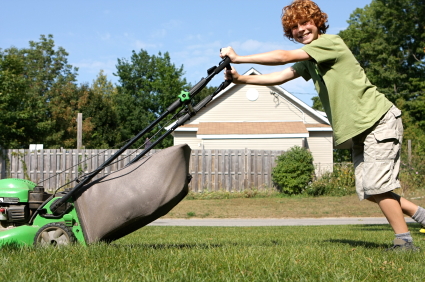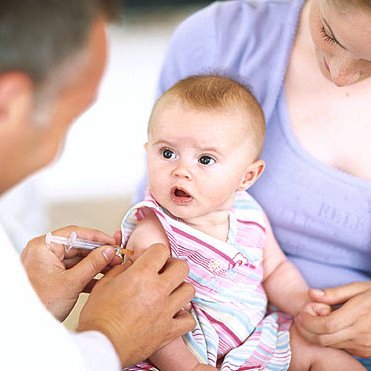
I know that most parents are interested in teaching their kids responsibility and life skills, and certainly would like their kids to contribute to their families. I also know many parents would like to never mow the lawn themselves again! Mowing the lawn can be a great way to learn responsibility and even pay for their own activities and save for college. We sometimes get asked when a child is old enough to mow the lawn, so we’ve added some tips from the AAP to help you make that decision. Keep in mind, it’s always better to do this gradually so that they learn a little bit at a time. They can help you for many years before they can do the job solo. It is important to teach your child how to use a lawn mower. Before you allow your child to mow the lawn alone, spend time showing him or her how to do the job safely. Supervise your child’s work until you are sure that he or she can manage the task alone. In addition, a lawn mower is potentially dangerous machine and lawn-mowing accidents can be devastating or even fatal.
Before learning how to mow the lawn, your child should show the maturity, good judgment, strength and coordination that the job requires. In general, the American Academy of Pediatrics recommends that children should be at least:
- 12 years of age to operate a walk-behind power mower or hand mower safely
- 16 years of age to operate a riding lawn mower safely
Before mowing the lawn:
- Make sure that children are indoors or at a safe distance well away from the area that you plan to mow.
- Read the lawn mower operator’s manual and the instructions on the mower.
- Check conditions: Do not mow during bad weather, such as during a thunderstorm, when grass is wet, or you will not have enough daylight to finish.
- Clear the mowing area of any objects such as twigs, stones, and toys, that could be picked up and thrown by the lawn mower blades.
- Make sure that protective guards, shields, the grass catcher, and other types of safety equipment are placed properly on the lawn mower and that your mower is in good condition.
- If your lawn mower is electric, use a ground fault circuit interrupter to prevent electric shock.
- Never allow children to ride as passengers on ride-on lawn mowers or garden tractors.
While mowing:
- Wear sturdy closed-toe shoes with slip-proof soles, close-fitting clothes, safety goggles or glasses with side shields, and hearing protection.
- Watch for objects that could be picked up and thrown by the mower blades, as well as hidden dangers. Tall grass and corners can hide objects, holes or bumps, or block your view.
- If the mower strikes an object, stop, turn the mower off, and inspect the mower. If it is damaged, do not use it until it has been repaired.
- Do not pull the mower backwards or mow in reverse unless absolutely necessary, and carefully look for children behind you when you mow in reverse.
- Use extra caution when mowing a slope.
- When a walk-behind mower is used, mow across the face of slopes, not up and down, to avoid slipping under the mower and into the blades.
- With a riding mower, mow up and down slopes, not across, to avoid tipping over.
- Keep in mind that lawn trimmers also can throw objects at high speed.
- Remain aware of where children are and do not allow them near the area where you are working. Children tend to be attracted to mowers in use.
Stop the engine and allow it to cool before refueling.
Always turn off the mower and wait for the blades to stop completely before:
- Crossing gravel paths, roads or other areas
- Removing the grass catcher
- Unclogging the discharge chute
- Walking away from the mower





About The Author: Kjolet
More posts by kjolet